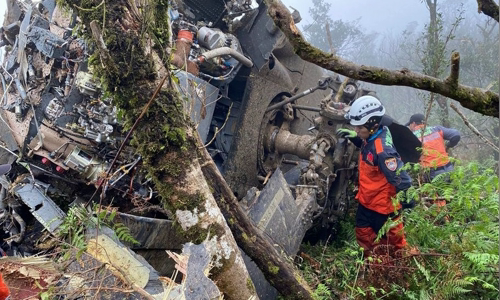Thick fog and pilot error were the cause of the helicopter accident that killed the Taiwanese armed forces commander in January.
"The weather, the terrain and the human element are the cause of the accident. The pilot has only 6-7 seconds to raise the altitude after the fog is all around," said General Huang Chih-wei, the team leader. investigated the accident, said at a press conference at Taiwan's armed forces headquarters today.

Identify UH-60M helicopter at the scene of the accident on January 2 Photo: UDN
The preliminary report showed that the co-pilot had twice warned the captain of heights before the UH-60M Black Hawk military helicopter crashed into the mountainside. The crew did not issue any emergency signals after disappearing from the radar display.
"We will adjust the pilot training plan on the simulation system after this incident," General Huang added.
General Shen Yi-ming, commander of the Taiwan Armed Forces, and seven senior officers died after the UH-60M Black Hawk helicopter carrying them crashed in the mountains near New Taipei City on January 2. The plane was carrying an official delegation to visit soldiers in Yilan Province, on the northern island of Taiwan.
This is the second deadliest accident of the UH-60M line in Taiwan after a Black Hawk of the search and rescue force crashed near Orchid Island in February 2018, killing 6 people on board.
Taiwan ordered 60 Black Hawk helicopters from the US in 2010 for a total value of US $ 2.8 billion. The contract is expected to end in August this year when the last six aircraft are handed over. The first units were ready for preliminary operation by the end of 2017.
UH-60 Black Hawk is a tactical transport helicopter that has been used by the US Army since 1979, with a maximum speed of 295 km / h and a ceiling of 5.8 km. Later variants were also developed for the US Navy and Coast Guard, and exported to numerous countries and territories around the world.
The modernized variant of the UH-60M has been handed over to the US Army since 2006, adding more modern features and new body panels, electronic flight control systems and more powerful engines than the original UH-60 series. copy.



 JenniferLindeman
JenniferLindeman







